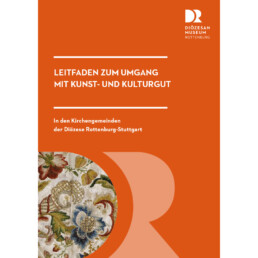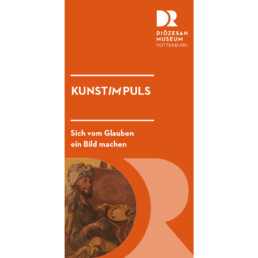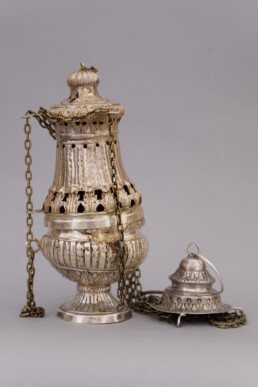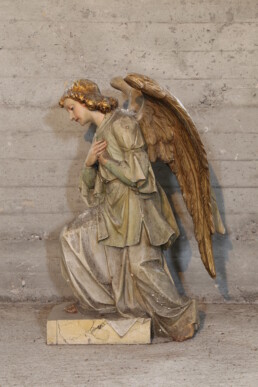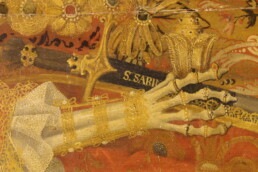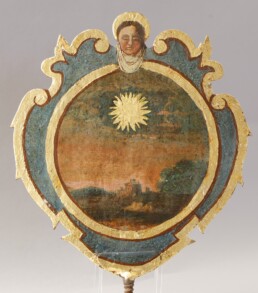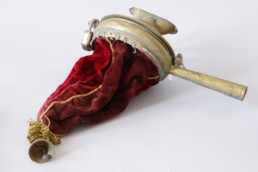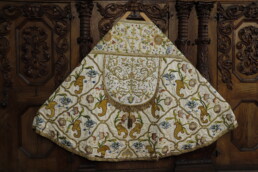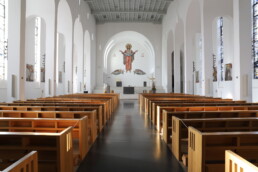Events
Why art inventory?
In May 2015, the specialist centre for art inventory was launched, which is organizationally linked to the Diocesan Museum of Rottenburg, and works closely with other departments of the Episcopal Ordinary (liturgy, church building). The core task of the department is the comprehensive inventory of architecture, art and cultural assets in order to prevent (further) loss and/or decay, and to clarify historical contexts.
From the beginning, the art inventory was primarily designed as a service for the communities. For this reason, brief inventories and images are made available to those responsible on site for updating and maintaining the directory of chattel. Last but not least, the inventory aims to create an accomplished basis for the scientific processing of Christian art objects in the diocese.


What is inventoried, and how?
The inventory of the parishes is usually carried out by the dean. A geographical or hierarchical order is not provided. Special appointments at additional locations take place when there is an urgent need for action. These primarily include: profanation and renovation measures, conservation problems, loss of substance, and suspected damage to art and cultural property.
All municipalities are informed in advance in writing and by telephone about the upcoming visit and the planned documentation. As part of the inventory, all sacred rooms and adjoining buildings, and their furnishings, are recorded. This includes the architecture (exterior and interior), the artistic church furnishings (altars, paintings, sculptures, etc.) and the sacristy contents (including liturgical implements, reliquaries, vestments and other textiles). Attics, cellars and other decentralized depots are also taken into account, together with their stocks.
The focus is on the photographic documentation of all objects; accompanying measurements, location, material, iconography and condition are recorded. The collected data is merged and archived in a – non-public – database. This serves as the basis for a later scientific analysis. In a final step, the municipalities receive a brief inventory with basic property data, as well as complete image data (analog and digital). The inventory is free of charge for all municipalities.
Consulting
In the course of the complilation, the specialist office advises the parishes on conservation and content-related issues relating to individual works of art. Concerns about storage and condition, and questions about cleaning and pest infestation are frequently raised with the specialist department. How great the need for action is in this area, is shown by the numerous attics, depots and storage rooms in the previously-inventoried dean’s offices, some of which have very poor – but some also very good – storage conditions. If necessary, the employees provide first aid, and lead on emergency safeguards and immediate on-site measures, as well as arrange contacts with restorers.
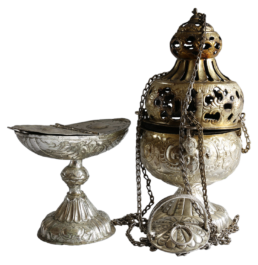
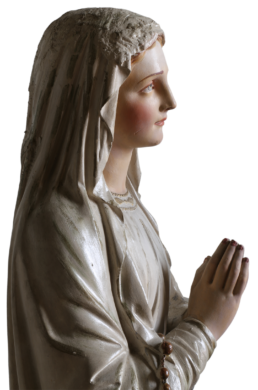
Questions and answers
You will find initial help on all basic questions relating to the storage, cleaning and preservation of art and cultural property in our guide to dealing with art and cultural property in the parishes of the Diocese of Rottenburg-Stuttgart.
Our employees are also available by phone or email for further advice.
Suggestions for the active inclusion of art objects in pastoral work are compiled in our Art Impulse (KunstImpuls).
In our annual event series Church Art Up Close! you can experience attic finds and church treasures directly in the context of lectures in the Diocesan Museum (Kirchenkunst Hautnah!).
Team
If you have any questions about inventory and the care of art and cultural property, please do not hesitate to contact us:

Diocesan Conservator Dr. phil. Melanie Prange
Direction
Phone: +49 (0) 7472 922-180
museum@bo.drs.de

Christine Bozler-Kießling M. A.
Scientific assistant / Contact for museum didactic questions
Phone: +49 (0) 7472 922-306
cbozlerkiessling@bo.drs.de

Dr. phil. Iris Dostal-Melchinger
Scientific assistant
Phone: +49 (0) 7472 922-304
Idostalmelchinger@bo.drs.de

Sebastian Eckert M. A.
Scientific assistant
Phone: +49 (0) 7472 922-303
seckert@bo.drs.de
Finds
Publications
Mitgliedsgabe des Kunstvereins der Diözese Rottenburg-Stuttgart, hg. vom Kunstverein, dem Diözesanmuseum und dem Bischöflichen Bauamt der Diözese Rottenburg-Stuttgart, Jg. 2018/19, Ostfildern 2020.
Venhorst, Erik (2015): Kostbares Gefäß zum Sprechen gebracht. In: Katholisches Sonntagsblatt,
Ausgabe 27, S. 40.
Dostal-Melchinger, Iris (2015): »Schöne Arbeit« für des Priesters geistliche Hochzeit. Ein filigranes
Krönle im Karton gefunden. In: Katholisches Sonntagsblatt, Ausgabe 29, S. 37.
Bozler-Kießling, Christine (2015): Das Schweißtuch der Veronika – Das wahre Antlitz Christi? In:
Katholisches Sonntagsblatt, Ausgabe 31/32, S. 46.
Venhorst, Erik (2015): Spender der Krankenkommunion in Zeiten der Pest – Der standhafte Karl
Borromäus. In: Katholisches Sonntagsblatt, Ausgabe 35, 2015, S. 36.
Dostal-Melchinger, Iris (2015): Kartuschendecke mit Opferaltären – Ein Bekenntnis zur Feier der
Eucharistie. In: Katholisches Sonntagsblatt, Ausgabe 40, 2015, S. 38.
Bozler-Kießling (2015): Horber Johannesschüssel – Das Haupt in der Schale. In: Katholisches
Sonntagsblatt, Ausgabe 44, S. 38.
Venhorst, Erik (2016): Seltenes Erbe des ehemaligen Paulinenklosters – Tschenstochau in Kiebingen.
In: Katholisches Sonntagsblatt, Ausgabe 4, S. 42.
Eckert, Sebastian (2016): Messweinwärmer, ein vergessenes Gerät – Sicher geborgen wie in der Arche.
Katholisches Sonntagsblatt, Ausgabe 31/32, S. 45.
Dostal-Melchinger, Iris (2016): Die Beichtstuhlfensterwand von Joachim Sauter in Wurmlingen bei
Rottenburg. In: Katholisches Sonntagsblatt, Ausgabe 37, S. 38f.
Venhorst, Erik (2016): »Liebe sei Tat« – Was eine alte Figur zu erzählen hat. Der wohltätige Vinzenz
von Paul. In: Katholisches Sonntagsblatt, Ausgabe 40, S. 42.
Bozler-Kießling, Christine (2016): Der Pelikan als Sinnbild christlicher Nächstenliebe – Vom
Eselsschreier zum Christussymbol. In: Katholisches Sonntagsblatt, Ausgabe 47, 2016, S. 38f.
Dostal-Melchinger, Iris (2017): Missionssammeldosen im Wandel – Der langsame Abschied vom
»Nickneger«. In: Katholisches Sonntagsblatt, Ausgabe 2, S. 36.
Dostal-Melchinger, Iris (2018): Furcht einflößende Folterinstrumente auf samtweichen Polstern.
»Arma Christi« – Jesu Leiden meditieren. In: Katholisches Sonntagsblatt, Ausgabe 12, S. 42.
Dostal-Melchinger, Iris (2018): Bilder der Verehrung Christi: Messkelche aus Blüten und Blättern. In:
Katholisches Sonntagsblatt, Ausgabe 21, S. 40f.
Bozler-Kießling, Christine (2019): Bilder von den vier letzten Dingen. »das erst der Todt« als stete
Mahnung. In: Katholisches Sonntagsblatt, Ausgabe 47, S. 38.
Eckert, Sebastian (2019): Die Engelsdarstellungen in der Rexinger Pfarrkirche St. Johannes Baptist
Hingebungsvolle himmlische Heerscharen. In: Katholisches Sonntagsblatt, Ausgabe 51/52, S. 44f.

